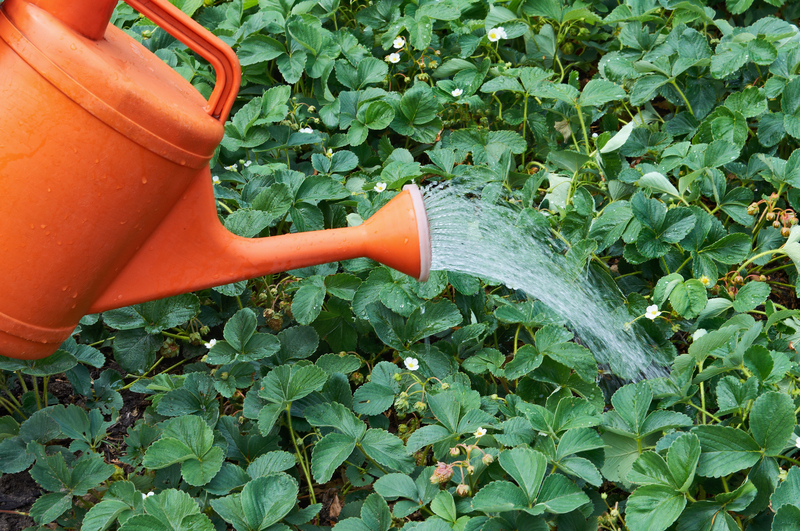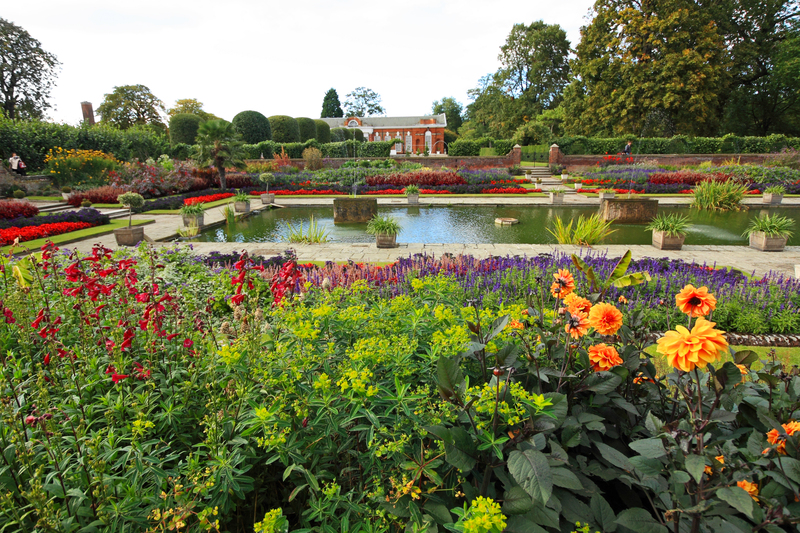Container gardening: an innovative approach to gardening
Posted on 06/09/2025
Container Gardening: An Innovative Approach to Gardening
Container gardening has rapidly evolved into one of the most popular and innovative approaches to gardening worldwide. Especially in urban settings where space is limited, this method allows both gardening beginners and experienced horticulturists to cultivate lush, vibrant gardens--no backyard necessary. In this comprehensive guide, we'll explore all aspects of container gardening, its benefits, and essential tips for a thriving container garden.

What Is Container Gardening?
Container gardening is the practice of growing plants exclusively in containers instead of planting them in the ground. These containers--ranging from traditional pots and window boxes to repurposed barrels and baskets--offer flexibility, creativity, and endless possibilities. Whether you wish to grow vegetables, flowers, herbs, or even small shrubs, a container-based garden allows you to tailor your gardening experience to your unique space and preferences.
Why Is Container Gardening Considered Innovative?
- Space Efficiency: Ideal for urban dwellers with balconies, patios, or rooftops.
- Mobility: Containers can be repositioned to optimize sunlight and shelter from harsh weather.
- Pest and Disease Control: Isolate and manage affected plants easily compared to in-ground beds.
- Creative Expression: Use diverse materials, shapes, and arrangements to reflect personal style.
- Year-Round Gardening: Many containers can be brought indoors or managed in greenhouses, extending growing seasons.
Benefits of Container Gardening
Adopting container gardening introduces numerous advantages for both home gardeners and the environment. Here are some key benefits:
1. Maximizes Small Spaces
For those who reside in apartments or houses with limited outdoor space, container gardening is a game-changer. It enables gardening vertically (using shelves or wall-mounted pots), on windowsills, rooftops, and even indoors. You'll make the most out of every inch available.
2. Versatility and Flexibility
Container gardening is applicable to a broad range of plants--from ornamental flowers to productive fruits and vegetables. This versatility is further amplified by the freedom to move plants as needed, whether for sunlight optimization, aesthetic purposes, or protecting sensitive varieties during adverse weather.
3. Enhanced Soil and Moisture Control
Using containers gives you direct control over soil type, moisture level, and drainage. This is particularly invaluable for cultivating plants with specific requirements (such as acidic soil for blueberries or dry environments for succulents). You can prevent soil-borne diseases and customize your approach for each type of plant.
4. Easier to Manage and Maintain
Container gardening minimizes bending, digging, and weeding--common tasks in traditional gardening that can be physically demanding. It's an accessible solution for seniors, individuals with physical limitations, or busy people seeking low-maintenance beauty.
5. Greater Aesthetic Appeal
With so many shapes, colors, and materials available, containers can significantly enhance your outdoor or indoor decor. Mix and match plant types and container styles to create visually striking displays all year long.
Choosing the Right Containers
The essence of successful container gardening lies in selecting appropriate containers. Here's what you need to consider:
- Size: Larger containers allow for deeper root growth and retain moisture longer, reducing watering frequency.
- Material: Clay, ceramic, plastic, wood, and metal are the most common. Each has pros and cons. For instance, clay pots are porous and promote aeration but dry out faster.
- Drainage: Every container must have drainage holes to prevent waterlogging and root rot.
- Color and Design: Light-colored containers reflect sunlight and keep roots cooler, while darker containers absorb heat.
Don't be afraid to get creative and repurpose items such as old boots, baskets, or barrels for a unique touch!
Best Plants for Container Gardening
- Vegetables: Tomatoes, peppers, lettuces, radishes, beans, and carrots all thrive in containers.
- Herbs: Basil, parsley, cilantro, thyme, and mint grow exceptionally well indoors and outdoors.
- Flowers: Geraniums, petunias, marigolds, pansies, and begonias offer vibrant color and fragrance.
- Fruit: Strawberries, dwarf citrus trees, and blueberries are popular for containers.
- Succulents & Cacti: Perfect for low-water arrangements, these plants flourish in well-draining pots.
Soil Selection and Preparation for Container Gardens
Choosing the proper soil is critical for a thriving container garden. Never use garden soil alone in containers; it is typically too heavy and retains too much moisture. Instead, opt for:
- Commercial Potting Mix: Designed for container gardening, these blends offer aeration, drainage, and nutrients.
- DIY Mixes: Combine peat moss or coconut coir, compost, and perlite or vermiculite for custom blends suited to your plant needs.
- Specialty Mixes: Certain plants (like orchids or cacti) require specific mediums such as bark chips or sandy soils. Always tailor the mix to your plant type.
Enrich your soil annually with compost or slow-release organic fertilizers to replenish nutrients lost during growing seasons.
Choosing Plants for Different Conditions
One of the most powerful aspects of container gardening is the ability to match plants to localized environments--even shifting them as sunlight changes.
Container Gardens for Sunny Areas
- Full-sun veggies: Tomatoes, peppers, eggplants, squash
- Sun-loving flowers: Zinnias, geraniums, marigolds, petunias
Container Gardens for Shady Areas
- Shade-tolerant veggies: Lettuce, spinach, kale, arugula
- Flowers for shade: Impatiens, begonias, ferns, hostas
Watering and Drainage Considerations
Proper watering remains one of the most critical components of successful container gardening. Here are essential guidelines:
- Check moisture daily: Especially in summer, containers dry out quickly.
- Water deeply: Ensure water reaches the entire root system.
- Don't overwater: Excessive moisture leads to root rot. Empty saucers under pots promptly.
- Mulch: Applying a layer of mulch helps retain soil moisture and reduces watering frequency.
Self-watering containers and drip irrigation systems can automate moisture management for busier lifestyles.
Fertilization and Nutrient Management
Containerized plants use up available nutrients quickly and require regular feeding. Consider:
- Organic fertilizers: Compost, worm castings, seaweed extracts, and fish emulsion nourish plants naturally.
- Slow-release fertilizers: Mix into soil at planting time for ongoing nourishment.
- Liquid feeds: Diluted liquid fertilizer for quick results, especially during active growth.
Tip: Always follow package instructions. Over-fertilizing can harm your plants.
Common Challenges in Container Gardening (and How to Solve Them)
1. Overcrowding
It's tempting to plant too many seeds or seedlings in one container. However, plants require adequate space and airflow. Follow spacing guidelines for each plant variety to avoid competition and disease.
2. Pest Problems
Though container gardens face fewer pests than in-ground settings, they are not immune. Inspect plants regularly for aphids, mites, or fungal issues. Consider natural deterrents like neem oil or insecticidal soap, and handpick pests where possible.
3. Water Stress
Containers can dry out quickly in hot weather. Use mulch and choose larger pots where possible, or group containers together to shade roots and reduce evaporation.
4. Nutrient Deficiency
If you notice weak growth or leaf discoloration, supplement soil with an all-purpose organic fertilizer or tailor feeding according to your plant's needs.
Creative Container Garden Ideas to Inspire You
Part of the allure of container gardening innovation lies in its creative potential. Below are a few unique approaches:
- Vertical Gardens: Install wall-mounted planters or stack pots to save floor space and create living walls.
- Mobile Herb Carts: Place container herbs in a rolling cart for easy kitchen access.
- Mosaic Pots: Decorate containers with colorful tiles and stones for artistic flair.
- Theme Gardens: Create color-themed displays, sensory gardens, or pollinator-friendly pots.
- Upcycled Planters: Use old tins, boots, or even teacups to make whimsical, eco-friendly displays.
Container Gardening for Sustainable Living
Container gardening is not only about aesthetics and convenience; it's also a powerful tool for sustainability. Growing your own food reduces your carbon footprint, minimizes food waste, and provides access to organic, healthy produce year-round.
- Compost at home: Enrich container soil with kitchen compost.
- Reduce pesticides: Manage pests organically in close quarters.
- Promote pollinators: Plant bee-friendly flowers or herbs like lavender and chives.
Additionally, upcycling containers prevents waste and encourages environmental responsibility.
FAQs About Container Gardening
Is container gardening suitable for beginners?
Absolutely! This innovative gardening method requires less maintenance and fewer resources than traditional gardens, making it perfect for first-time gardeners. Start with easy-care herbs or flowers to build confidence.
What are the best vegetables for small containers?
Crops like lettuce, radishes, green onions, and dwarf tomatoes excel in compact spaces. For herbs, basil and chives are highly recommended.
How do I prevent container plants from drying out?
Choose larger pots, use moisture-retentive soil mixes, mulch the surface, and consider self-watering systems. Water thoroughly, but don't let plants sit in water.
Can you reuse container soil?
You can, but it's best to refresh old soil by mixing in compost and removing old roots. For disease-prone plants, start with fresh potting medium each season.

Getting Started with Your Container Garden: Step-by-Step Guide
- Choose Your Location: Select a spot with at least 6-8 hours of sunlight per day for most edibles.
- Select Containers: Pick sizes and materials suitable for your plant choices.
- Prepare Potting Mix: Use high-quality potting soil, appropriate amendments, and fertilizer.
- Plant: Arrange seeds or young plants according to their spacing requirement.
- Water Well: Soak the soil thoroughly after planting and monitor regularly.
- Feed Regularly: Follow recommended schedules for your fertilizer of choice.
- Observe and Adjust: Move containers for optimal light and protection as needed.
Conclusion: The Future of Innovative Gardening
Container gardening has transformed the way we think about cultivating plants, offering an innovative, sustainable, and accessible approach to gardening for everyone. Whether on a balcony, terrace, or indoor windowsill, this gardening style makes it possible to enjoy fresh produce, beautiful blooms, and green spaces year-round. Embrace container gardening today, and unlock a world of botanical creativity--no matter where you live or how much space you have.
Ready to start your own container garden? Begin by experimenting with a few pots, gradually expanding as your confidence and interest grow. This innovative approach to gardening promises not only bountiful harvests and stunning displays but also a more sustainable, fulfilling lifestyle.
Happy gardening!

